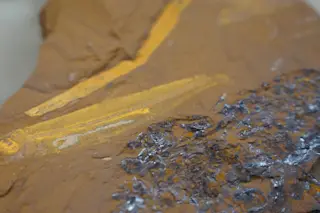Someone says “crocodiles” and the image that comes to mind is probably a toothy one. Modern crocodilians are power biters, and many species are apex predators. But it wasn’t always that way.
Paleontologists believe that multiple extinct species preferred plants over prey.
Humans, like most mammals, are heterodonts: We have different kinds of teeth specialized for various tasks. Just sweep your tongue around your mouth and you’ll feel the pointy canines, chisel-like incisors and large, grinding molars and premolars.
Our diverse dentition is one reason we’re such efficient omnivores. We’ve got a tooth for every task, whether it’s biting off a piece of beef jerky or grinding corn into a swallow-friendly slurry.
Today’s crocodilians — crocodiles, alligators, caimans and gharials — have much less diversity in their mouths. While there is some variation in size and shape, crocodilian teeth are basically elongated cones, perfect for grabbing, nabbing and stabbing prey.
...














